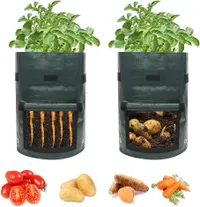How to grow potatoes in containers – the 6 tricks garden experts want you to know for your potted crops
Growing potatoes in containers is easier than you might think, even if all you have to work with is a balcony. Here's how to get started


Want your own allotment but worried you don't have the space for a vegetable plot? Well, we're here to tell you that you do (most likely, anyway). Container planting is the accessible way to grow your own edible garden, and it can be far more substantial than strawberries, salad leaves, and the odd herb, too. Even in the smallest bit of outdoor space, you can easily grow a staple ingredient like potatoes.
Contrary to belief, you don't need a sprawling backyard to grow spuds. With the right pot, sufficient soil, and enough hours of sunlight, you'll be on your way to growing the most versatile vegetable known to man, even if you only have a small patio or balcony to work with. But before you can rustle up your roasties or serve up your own homegrown french fries, there are a few insider tricks you'll want to be aware of.
With the help of some expert gardeners, we've put together this handy 6-step guide on how to grow potatoes in containers. From choosing the right container to using expert tricks like 'hilling', here's everything you need to know to get started.
Can you grow potatoes in containers?
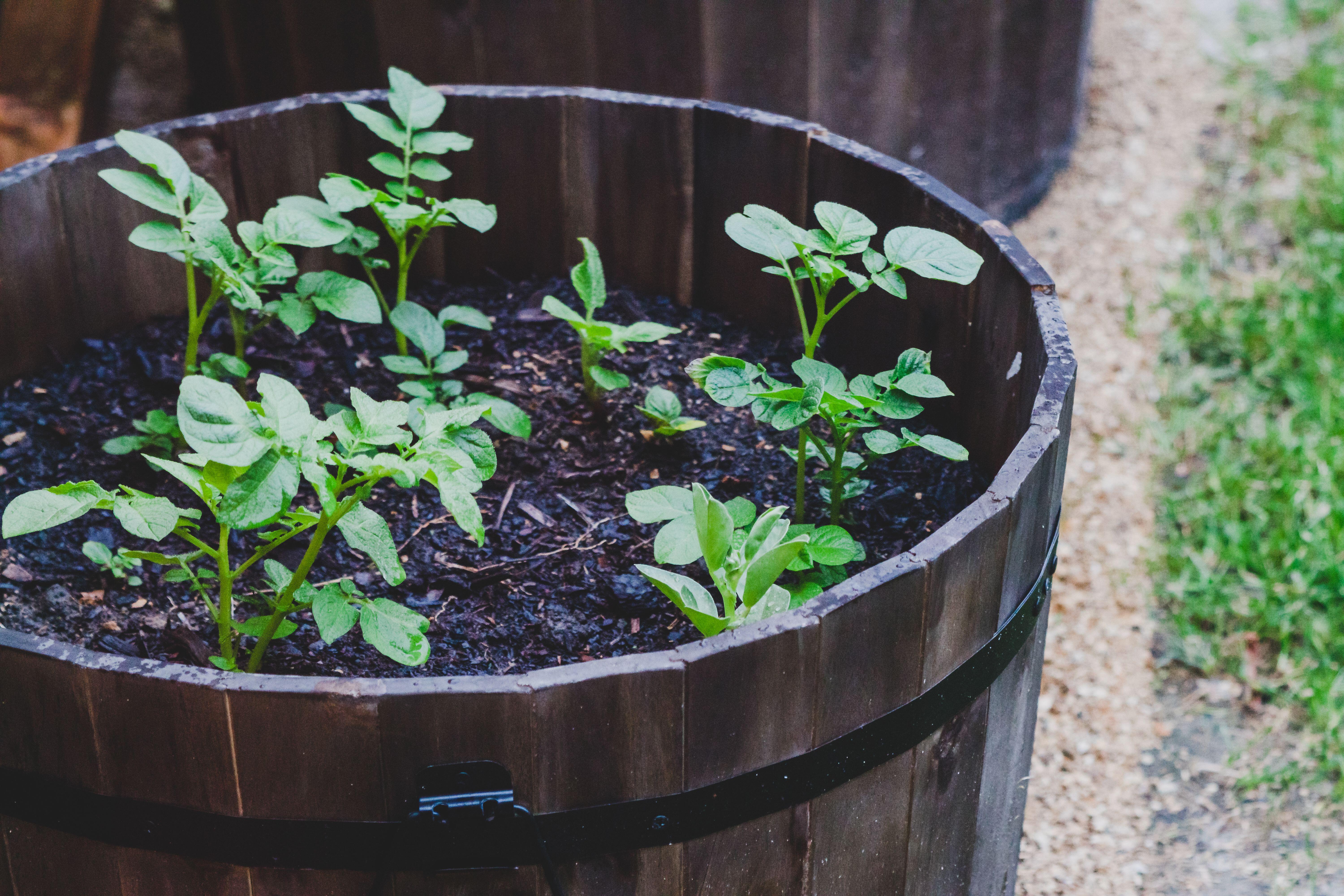
The simple answer to whether or not you can grow potatoes in containers is yes, but you will need to have the right conditions - like sunlight - for them to grow (more on that later).
One of the best perks of container gardening is that it makes it easier to grow what you want, where you want. 'It allows for flexibility and mobility, making it ideal for small spaces or those who do not have access to a traditional garden,' explains Zahid Adnan, gardener and founder of The Plant Bible. Even if you don't have sustained sunlight in one single spot in your small backyard, a freestanding pot allows you to move your plants into different locations if you need to.
You might think that because potatoes grow pretty deep underground they need to be planted in beds, but they can actually thrive within the confines of a container. 'Potatoes are remarkably adaptable, making them an excellent choice for space-limited gardeners,' notes Itamar Ben Dor, plant expert and blogger at Green Life. 'Growing potatoes in pots not only maximizes space efficiency but also allows for better control over soil conditions and easier pest management, too.' Here are six steps to set you on your way.
1. Choose the right container
As with any form of vegetable container gardening, for a successful potted potato harvest you'll need to choose the right container. 'When selecting a container for growing potatoes, it is essential to choose one that is large enough to accommodate the growth of the plant's roots and the tubers it produces,' says Zahid. 'A container with a minimum depth of 12 inches is recommended.'
The Livingetc newsletters are your inside source for what’s shaping interiors now - and what’s next. Discover trend forecasts, smart style ideas, and curated shopping inspiration that brings design to life. Subscribe today and stay ahead of the curve.
Your pot doesn't have to be limited to heavy plastic tubs, either. 'Various containers can be used, such as fabric grow bags or even repurposed buckets,' says Tony O'Neill, founder of Simplify Gardening. Besides one that's large enough, you'll also need to make sure your container has drainage holes to prevent your soil from becoming waterlogged and causing your potatoes to rot. Mesh fabric planters have the advantage of doing this naturally, as well as being more lightweight and consequently easier to move.
2-Pack 10 Gallon Potato Grow Bags, Amazon
These fabric planting bags are ideal for growing potatoes. They have a velcro window for you to observe the growth of the plant and to easily harvest your potatoes once they're ready. The material also offers great drainage and aeration, and they're 100% reusable too.
2. Use a well-draining soil
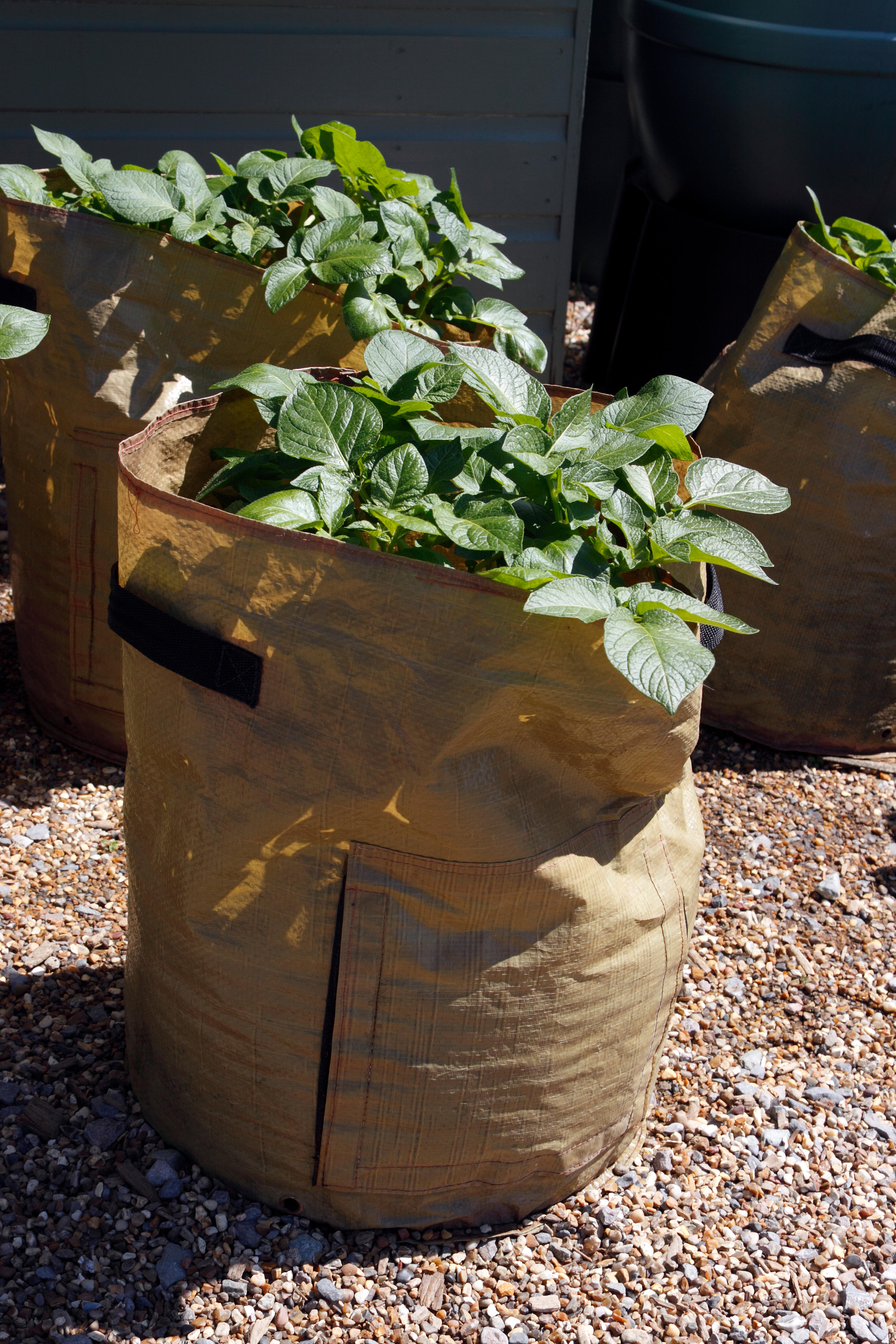
One of the most common container gardening mistakes when it comes to growing potatoes is waterlogged soil that leads to rot. To avoid this, not only do you need adequate drainage holes in your pot, but you need suitable soil, too. As Zahid notes: 'Potatoes require well-draining, nutrient-rich soil to thrive, so a mix of potting soil and compost or aged manure is ideal.'
According to Tony, it may help to add some perlite or vermiculite to your mix - some of the best soilless potting mixes for container gardening - for better drainage as well as to offer the right nutrients your vegetables need. There's also the acidity of the soil to consider too. 'The ideal soil for growing potatoes in containers is a slightly acidic mix with a pH between 5.5 and 6.5,' he adds. You can test this with a pH soil testing meter, like this one from Amazon.
Mix this perlite with your potting mix for improved aeration of your soil. It will also help with drainage of your container grown potatoes too, helping you avoid waterlogged pots that could lead to rot.
3. Plant your potatoes at the proper depth
While they need plenty of room to grow, potatoes don't need to be planted as deep as you might think. If you plant them too shallowly, however, the tubers may become exposed to sunlight.
According to Itamar, the proper depth is around four to six inches. 'When planting, be sure to bury your seed potatoes with the sprouts facing upward,' he adds. This will form the leafy portion of the plant that you see above ground.
4. Position your container in a sunny spot
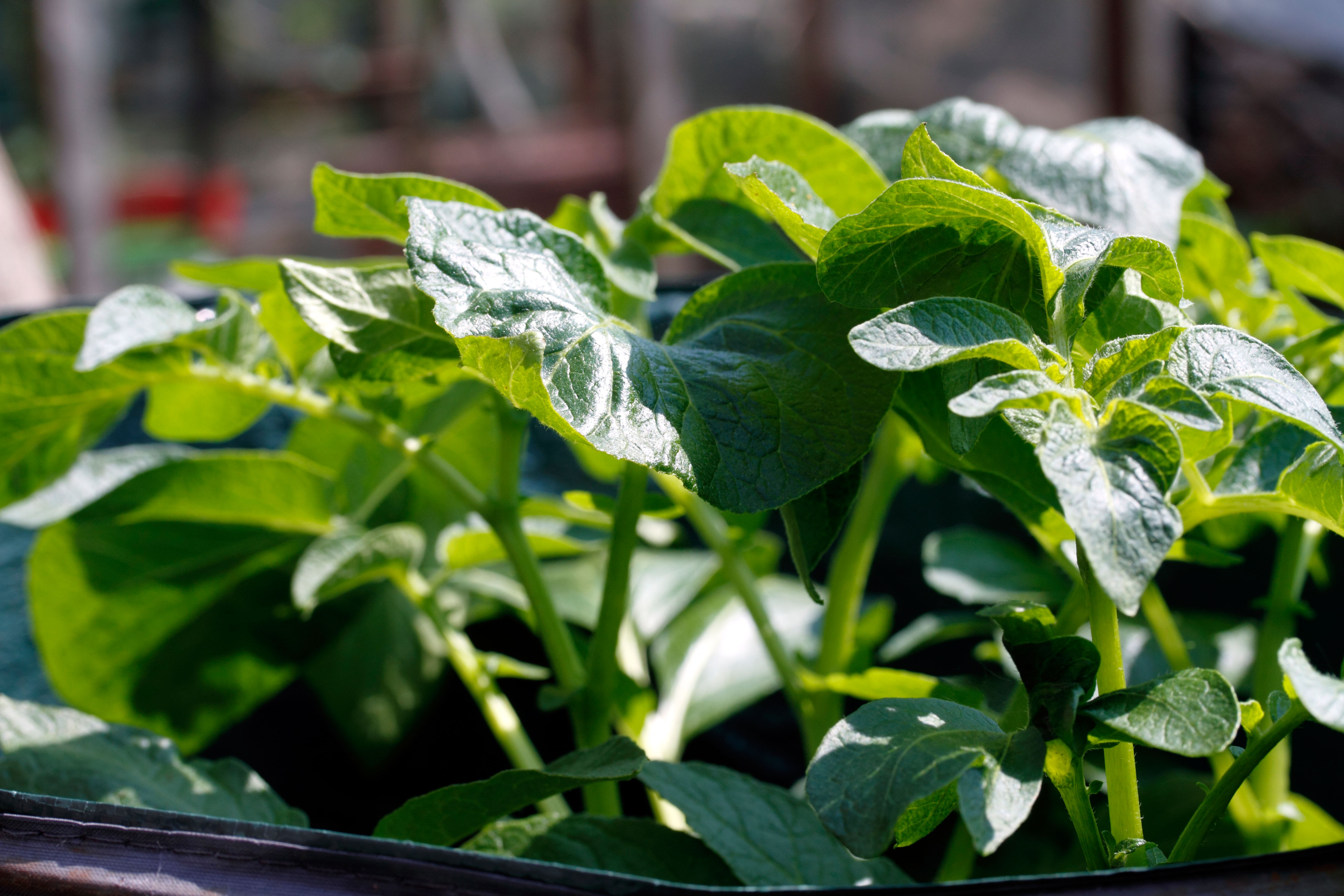
We all know that sunlight is essential for plants, but potatoes need a lot of it. 'Place your container in a location that receives at least six to eight hours of direct sunlight daily,' notes Itamar. Any less than this and you'll likely find that your yield suffers. If your space is limited, it's best to choose the sunniest spot on your balcony or patio.
5. Keep your soil consistently moist
Just to make things more challenging, although they love the sun, your potato plants need to be kept consistently moist. This means you need to make sure they don't dry out, but you should also be wary of going too far in the other direction.
'Keep the soil consistently moist but avoid overwatering as this can lead to disease issues,' says Itamar. 'Additionally, potatoes prefer cooler temperatures, ideally around 60 to 70°F so avoid extreme heat.' When it comes to how to water plants in containers, frequent watering will help to regulate temperature, so stick to a schedule to keep your plants happy.
6. Consider using the 'hilling' method
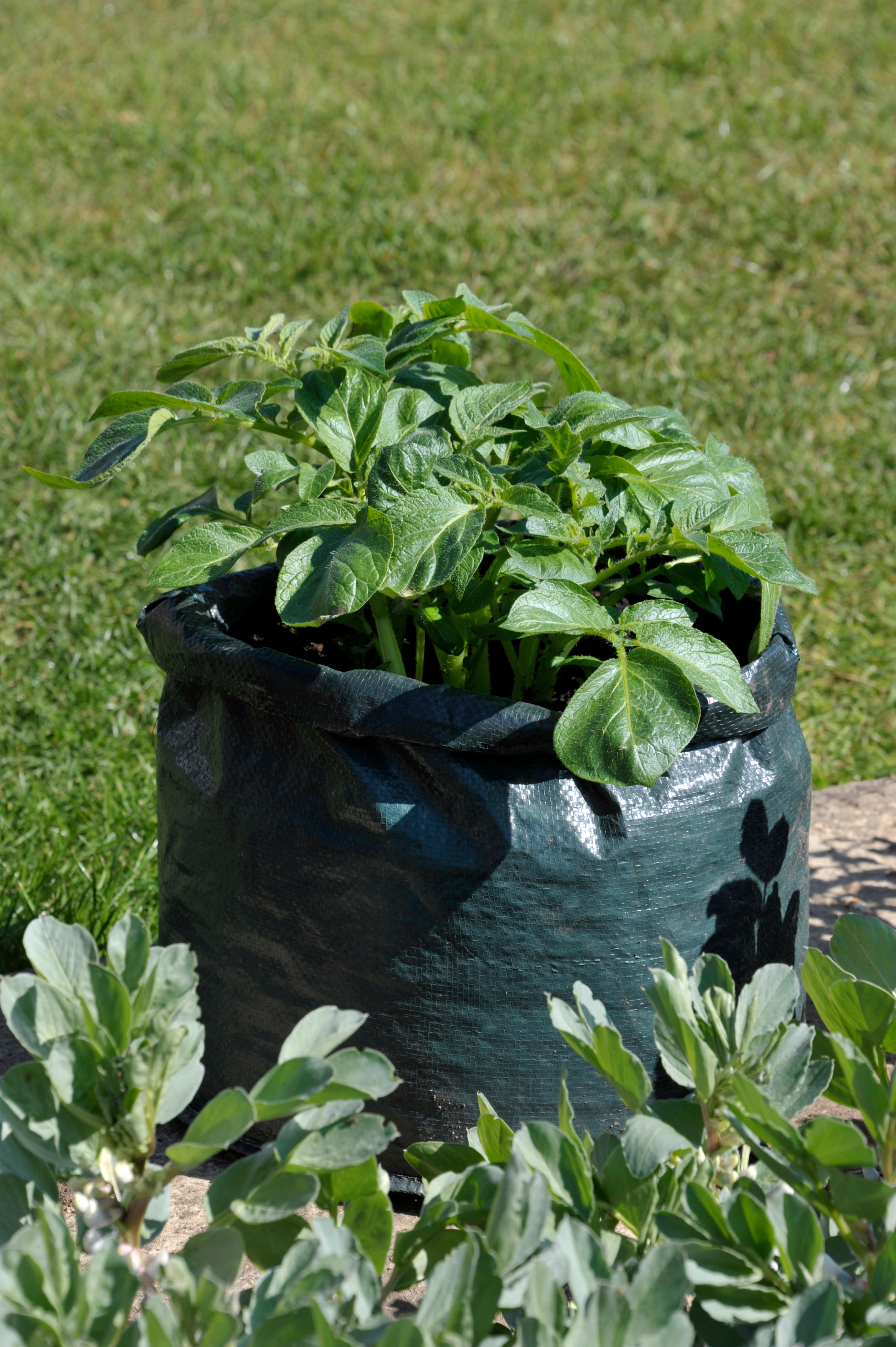
Last but not least, you can use a nifty little trick called 'hilling' to keep your plants healthy so they result in a better harvest. With this gardening method, the clue is in the name.
'As the potato plants grow, gradually add soil to the container until it reaches the top,' explains Zahid. 'This helps to encourage the growth of additional tubers and prevent them from being exposed to sunlight, which can cause them to turn green and become toxic.'
What are the challenges of growing potatoes in containers?
There are some common problems you might encounter when growing potatoes in containers, especially if they're all close together in a small space. Besides the risk of waterlogged pots, Tony says some of the most common challenges include pests, diseases, and supporting the foliage.
'Overcoming these challenges involves regular inspection for signs of pests or diseases, using organic or chemical controls if necessary, and providing adequate support for the foliage,' he says. 'I have a unique wooden frame suspended approximately 18 inches above the container to support the foliage and hold drip irrigation.' You can do this yourself on a smaller scale with some bamboo canes or garden twine.
What is chitting?
Another piece of potato growing jargon is 'chitting'. This step should be done before planting and simply involves placing your seed potatoes in a cool, well-lit spot for a few weeks. 'This encourages sprouting, giving your plants a head start before growing,' says Itamar.

Lilith Hudson is a freelance writer and regular contributor to Livingetc. She holds an MA in Magazine Journalism from City, University of London, and has written for various titles including Homes & Gardens, House Beautiful, Advnture, the Saturday Times Magazine, Evening Standard, DJ Mag, Metro, and The Simple Things Magazine.
Prior to going freelance, Lilith was the News and Trends Editor at Livingetc. It was a role that helped her develop a keen eye for spotting all the latest micro-trends, interior hacks, and viral decor must-haves you need in your home. With a constant ear to the ground on the design scene, she's ahead of the curve when it comes to the latest color that's sweeping interiors or the hot new style to decorate our homes.
